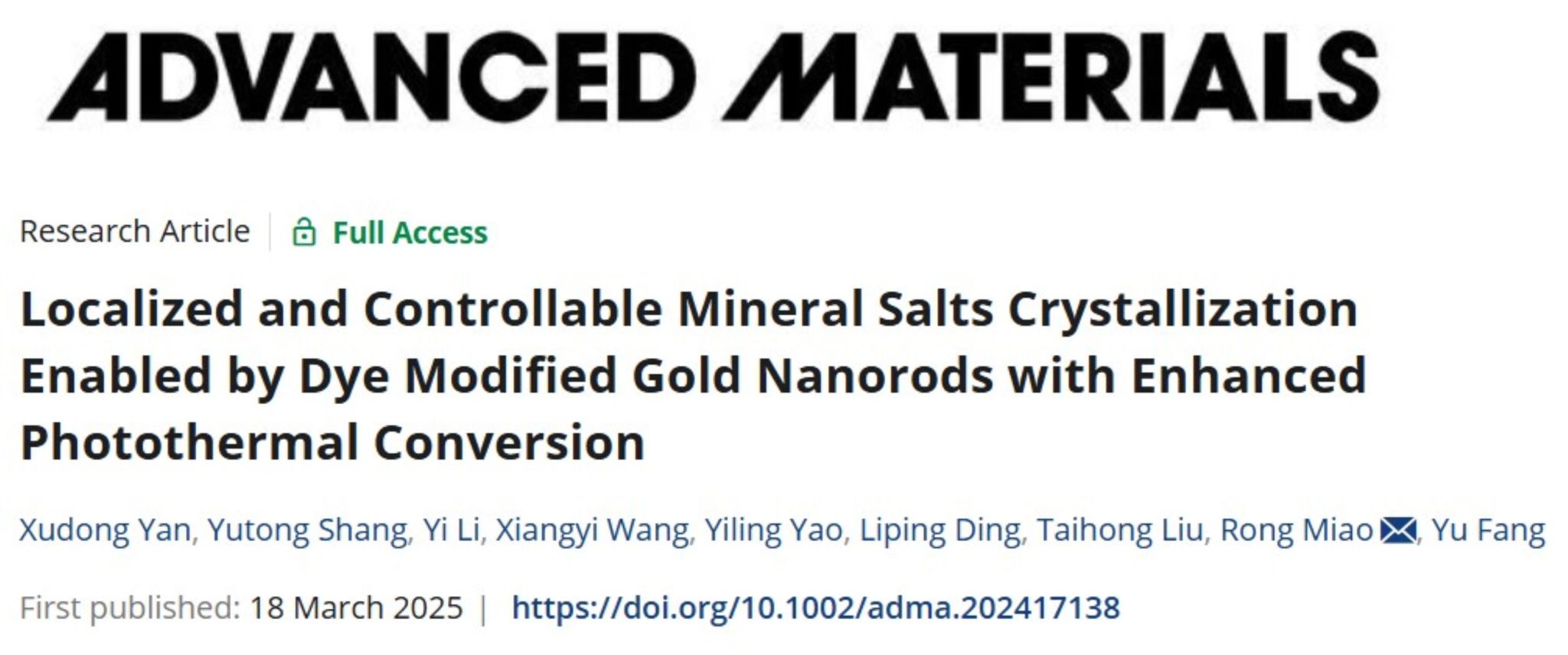
Xudong Yan, Yutong Shang, Yi Li, Xiangyi Wang, Yiling Yao, Liping Ding, Taihong Liu, Rong Miao*, and Yu Fang. Adv. Mater. 2025, 2417138 DOI: 10.1002/adma.202417138

Photothermal materials have attracted significant attention due to their broad applications in energy conversion, biomedical fields, environmental remediation, and beyond. As a typical photothermal material, gold nanorods (GNRs) possess unique localized surface plasmon resonance properties, enabling efficient conversion of light energy into heat, making them a focal point in photothermal research. However, the photothermal performance of conventional GNRs is constrained by their light absorption efficiency and dispersion stability, making it difficult to meet the growing demand for highly efficient and stable photothermal materials. Therefore, how to further enhance the photothermal performance of GNRs through rational material design and functional modification has become an important research direction.
Organic dyes, with their diverse types and tunable photophysical properties, can be precisely designed at the molecular level to enhance non-radiative transitions in the excited state, thereby achieving efficient photothermal conversion. However, organic materials often face challenges such as photobleaching, especially in solid-state applications. This study reports a simple and effective method to construct organic-inorganic hybrid photothermal materials with both high photothermal conversion efficiency and excellent stability by modifying specially designed organic photothermal molecules onto the surface of GNRs.
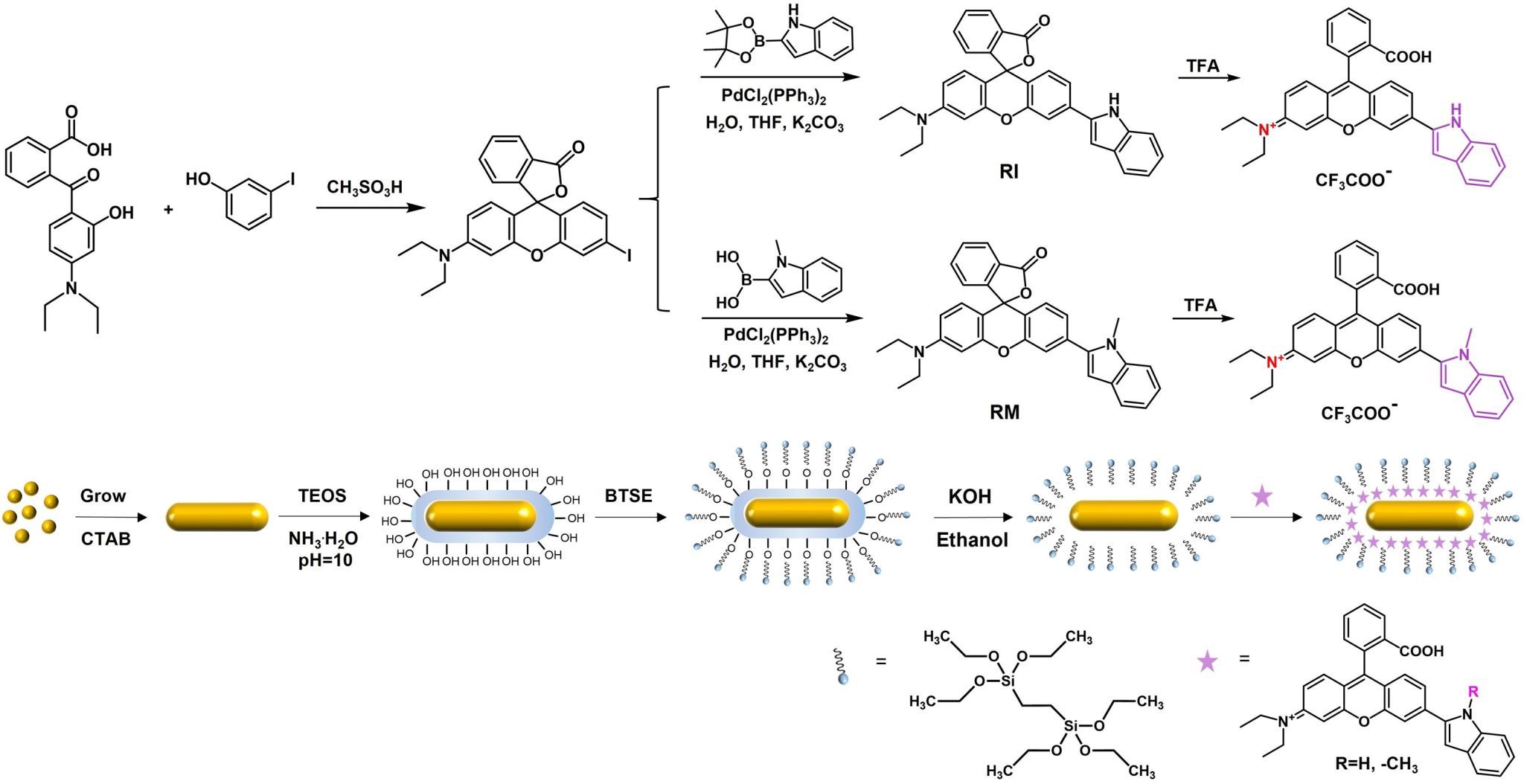
Figure 1. The synthesis process of modifying GNRs.
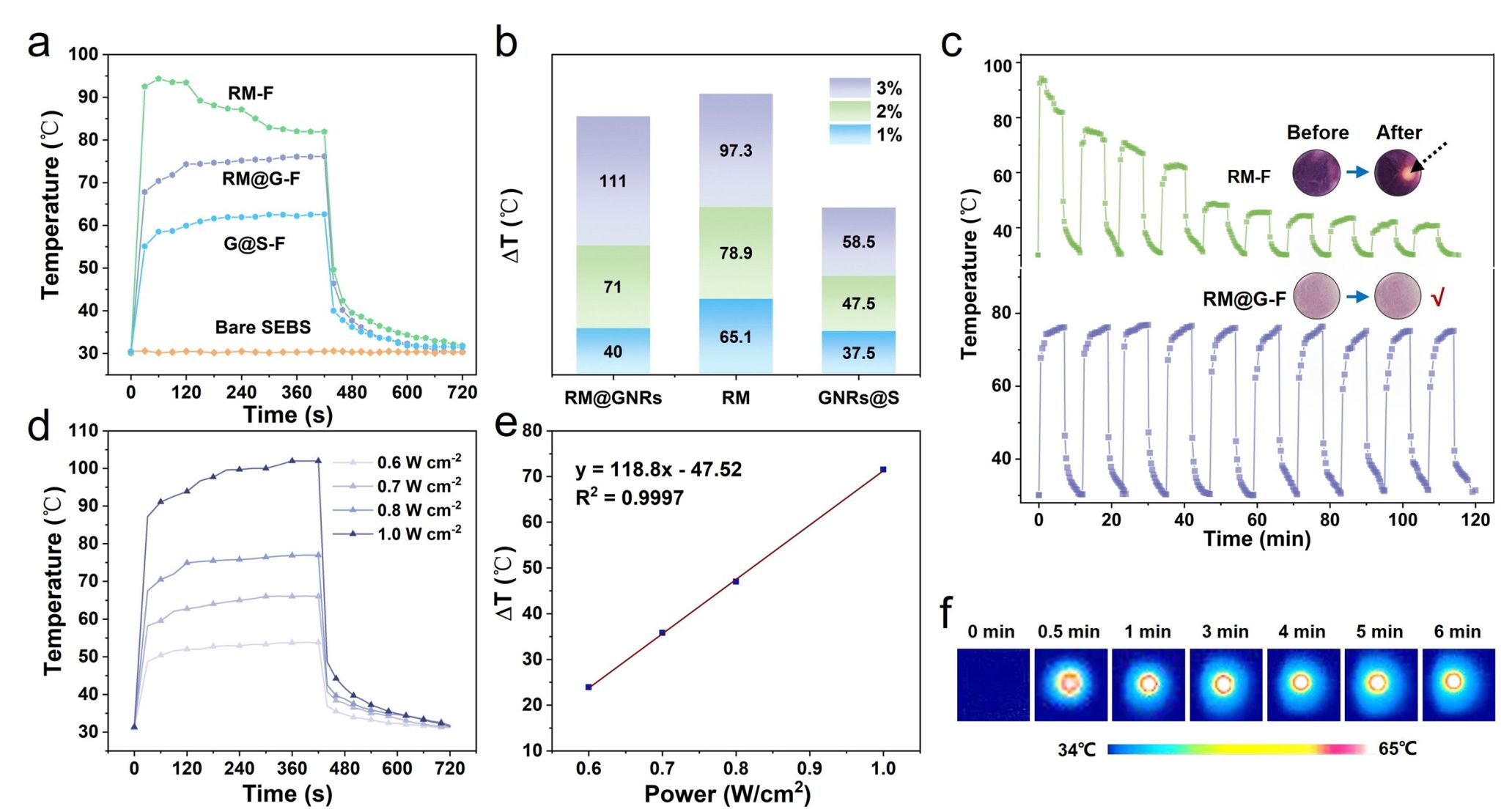
Figure 2. The photothermal conversion performance of films doped with different materials.
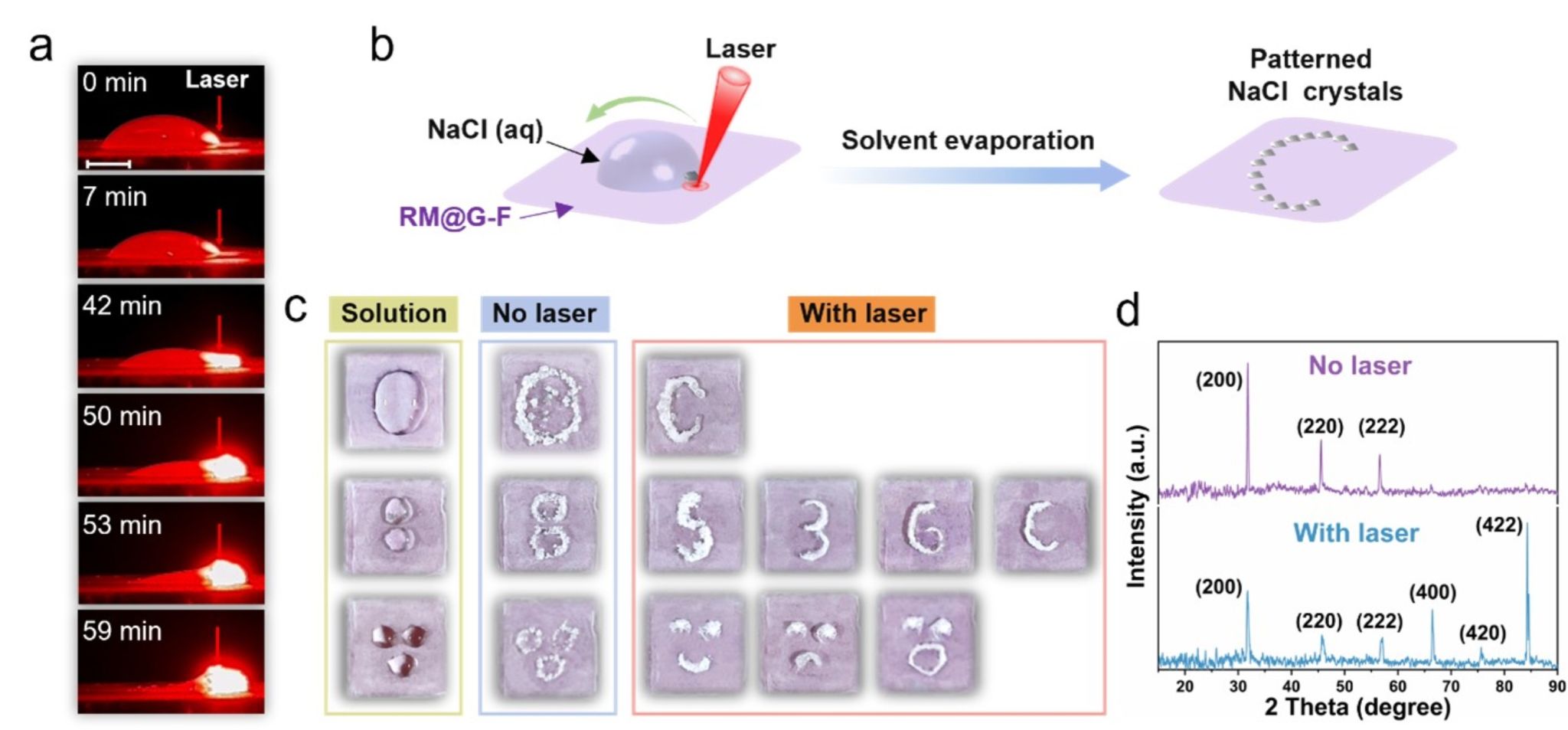
Figure 3. Photothermally induced surface patterning of NaCl crystals.
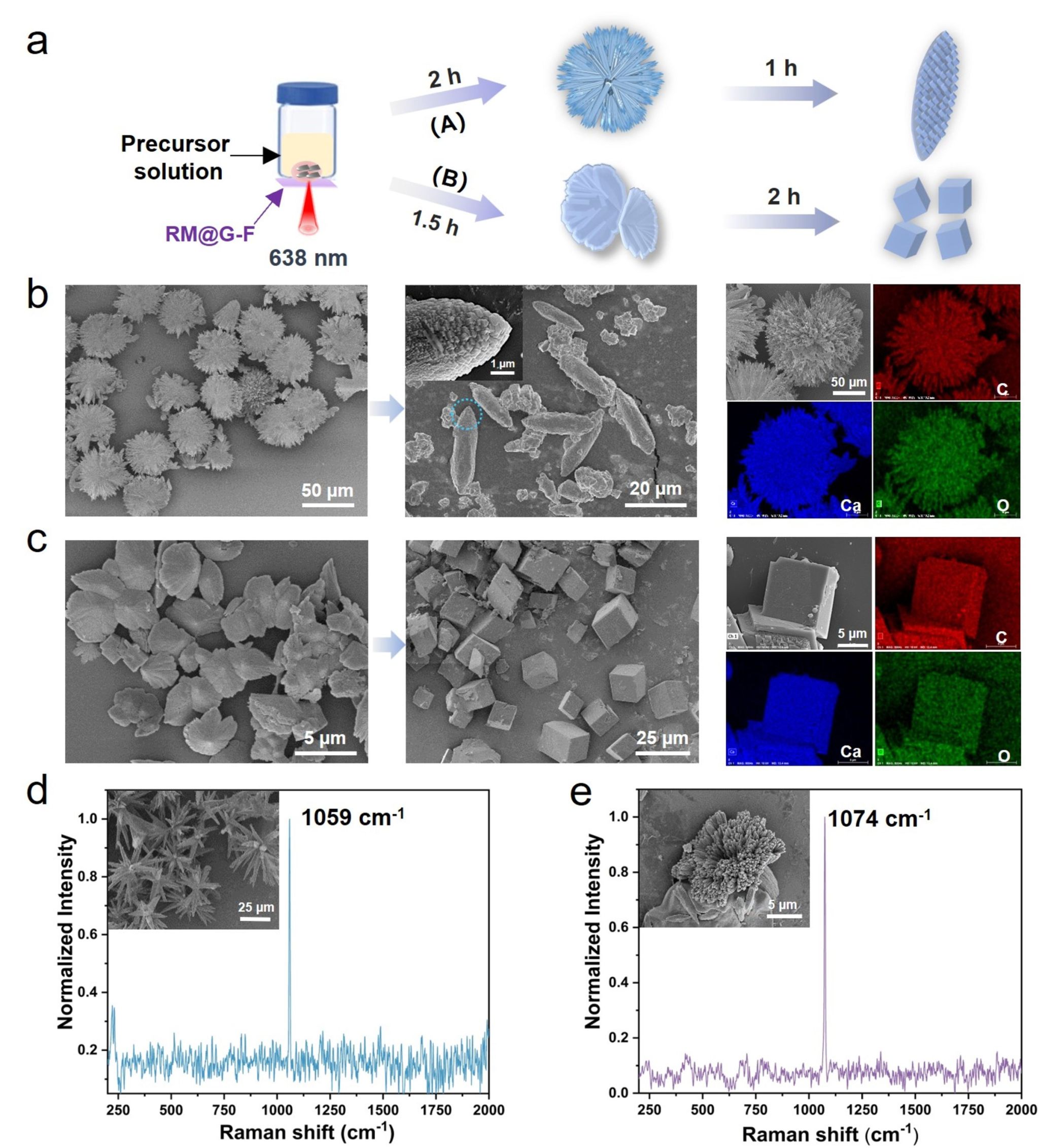
Figure 4. Photothermally induced synthesis of CaCO3, BaCO3, and SrCO3 crystals.
Under 638 nm laser irradiation, the surface temperature of the modified GNR-doped film increased by up to 111°C, twice that of the unmodified GNR-doped film under the same conditions. By adjusting the doping concentration or laser power, the surface temperature of the film could be precisely controlled between 31°C and 116°C. Additionally, the study found that films doped solely with organic molecules exhibited significant photobleaching after just one illumination cycle, whereas the modified GNR-doped films demonstrated superior stability and reusability, maintaining excellent photothermal conversion performance even after 10 cycles.
To understand the outstanding photothermal conversion performance of the modified GNRs, we employed density functional theory (DFT) to calculate the excited-state conformation and frontier molecular orbitals of the designed molecules. The results revealed strong intramolecular charge transfer and an extremely low radiative transition probability in the designed molecules. Therefore, we concluded that the exceptional photothermal performance of the modified GNRs arises from the synergistic effect of plasmonic heating and non-radiative relaxation.
Leveraging the high photothermal conversion efficiency, outstanding stability, and reusability of the modified GNR-doped films, we successfully utilized them as energy converters to achieve controllable photothermal-induced crystallization and surface patterning of various mineral salts (NaCl, CaCO₃, BaCO₃, and SrCO₃). This research not only provides a novel technical pathway for the design and fabrication of high-performance photothermal materials but also expands their potential applications in energy conversion, micro/nano fabrication, and crystallization control.
First Author: Yan Xudong, master’s student, Shaanxi Normal University
Correspondence Author: A/Prof. Miao Rong, Shaanxi Normal University
Full Text Link: https://doi.org/10.1002/adma.202417138
 Latest Updates
Latest Updates






